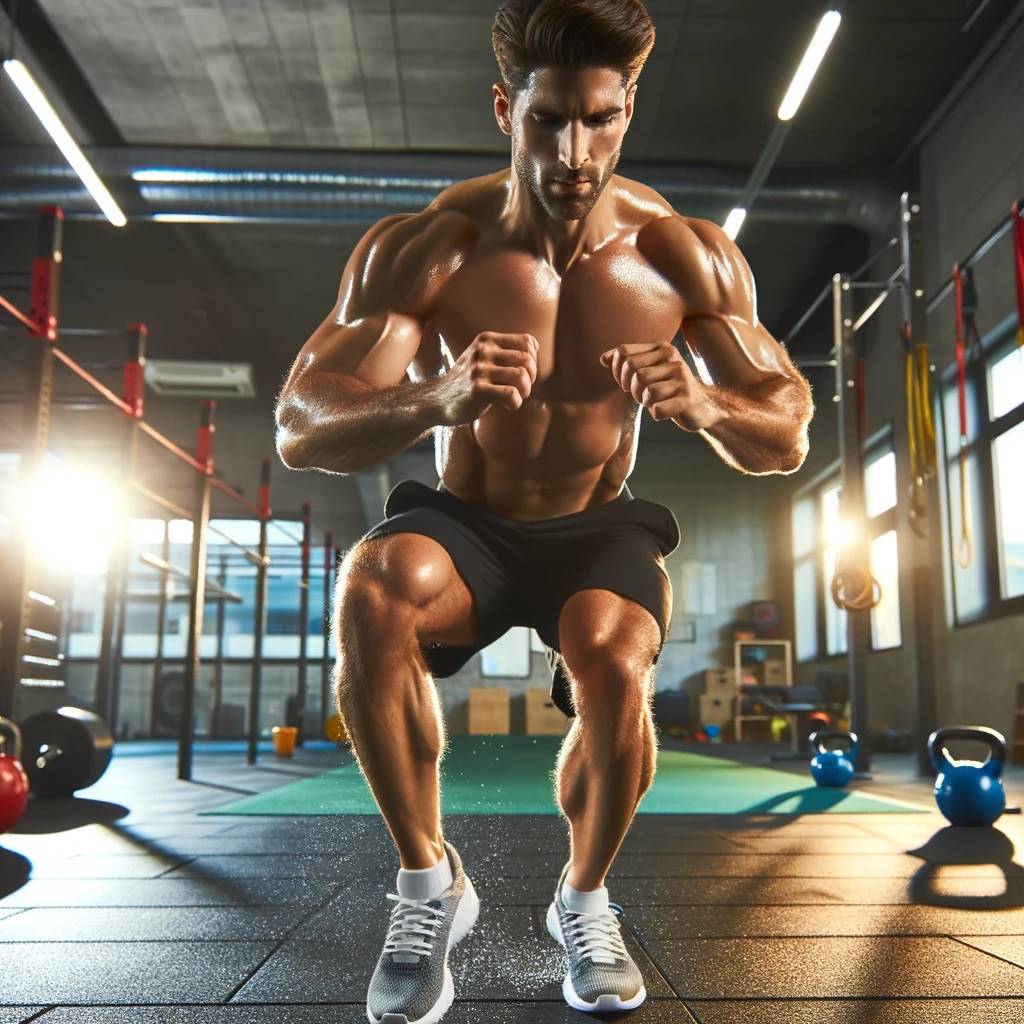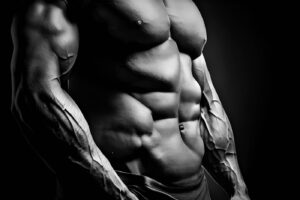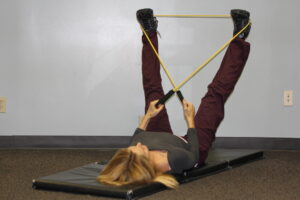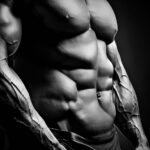Are your fitness goals pointing you towards that sculpted, powerful upper body you’ve been dreaming of? High-Intensity Interval Training (HIIT) is more than just a buzzy acronym; it’s a dynamic form of exercise that’s proven to boost cardiovascular fitness, increase strength, and burn fat efficiently. While HIIT is commonly associated with full-body workouts, this specific regimen hones in on the upper body, providing a tailored approach for those seeking to chisel their arms, shoulders, chest, and back. So, what are you waiting for? Let’s explore the upper body HIIT workout in this guide.
The Power of Upper Body HIIT
HIIT has taken the fitness world by storm, and for good reason. The upper body is home to several major muscle groups, and when targeted with high-intensity exercises, the results can be rapid and transformational. We’re not just talking about looking the part, but also about functional strength that can power through real-world activities with ease and grace. By incorporating HIIT into your workout routine, you can expect to see the following benefits:
- Improved cardiovascular health and endurance
- Increased muscle strength and definition in the arms, chest, shoulders, and back
- Faster metabolism leading to increased fat burning
- Enhanced functional strength for daily activities
But before we jump into the routine, it’s important to understand HIIT’s principles and why it’s so effective.
Understanding HIIT Principles for Your Upper Body
The essence of HIIT lies in its name—short bursts of high-intensity exercise followed by periods of low-intensity activity or rest. This regimen maximizes the calorie burn not just during the workout but also for hours afterward.
During the intense intervals, the heart rate spikes, and muscles are challenged to their limits, signaling the need for adaptation and prompting a growth and strength response. Meanwhile, the resting periods allow your body to catch its breath, dialing down the heart rate, and conserving energy for the next round of intensity.
This cycle is not only great for torching calories but also for improving cardiovascular health, endurance, and—most importantly for our purposes—upper body strength.
Benefits of Upper Body HIIT
What sets the Upper Body HIIT apart is its personalized focus on sculpting your arms, chest, shoulders, and back. By targeting these muscle groups with short, intense workouts, you can expect to see significant improvements in muscle definition, endurance, and toning. Here are a few more benefits of incorporating Upper Body HIIT into your workout routine:
- Time-efficient: With the quick, intense intervals and short rest periods, you can get an effective upper body workout in just 20 minutes.
- Versatile: Upper Body HIIT exercises can be done at home, a gym, or even outdoors with minimal equipment needed.
- Challenging: The intensity of HIIT workouts pushes your body to adapt and improve, helping you break through plateaus and reach new fitness levels.
Additionally, the high-energy output required by HIIT means your body taps into fat stores for fuel, aiding in fat loss and contributing to that sought-after lean physique.
We’ll unpack more benefits as we move through this guide, but for now, consider this your ticket to a stronger, fitter upper body.
Getting Started with Upper Body HIIT
Before undertaking any new workout program, especially one as intense as HIIT, it’s crucial to start with the right foundation.
The Warm-Up
Always, always start with a proper warm-up. A dynamic routine that mimics the movements of your upcoming workout will prepare your muscles and mind for the challenges ahead. Shoulder rolls, arm swings, and standing torso twists are excellent starting points.
Form is Everything
Maintaining proper form during exercise not only ensures you’re targeting the right muscles but also helps to prevent injury. Focus on your technique from the very first rep to the last, and always listen to your body.
Progression is Key
HIIT is all about pushing boundaries, but those boundaries should be extended gradually. Start with a level that’s challenging but doable, and then progressively increase the intensity as you become more familiar with the exercises.
A Sample Upper Body HIIT Circuit
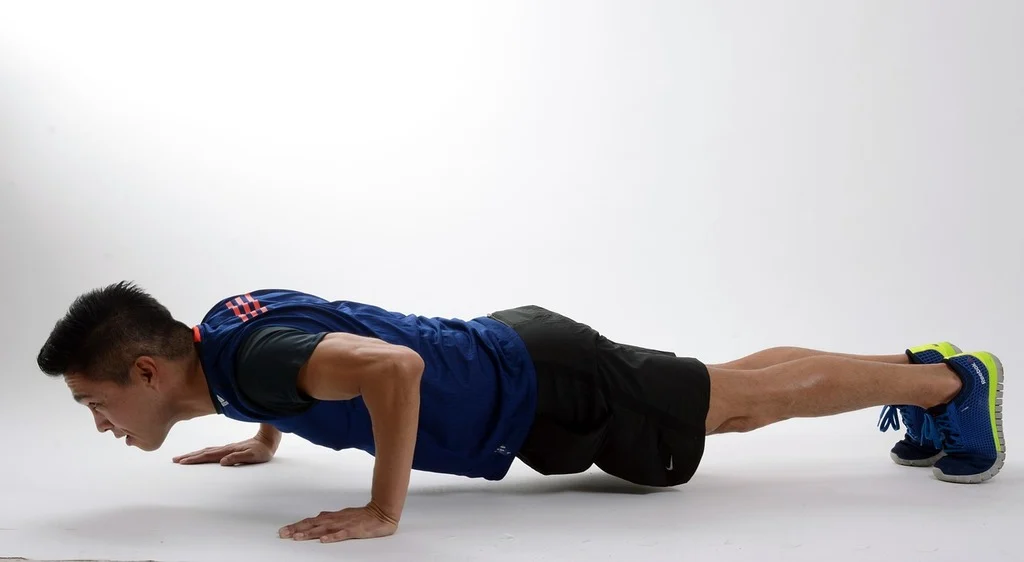
Push up builds upper body strength, reducing the risk of cardiac events, and improving body composition.
Here’s where the rubber meets the road. A sample Upper Body HIIT Circuit might look like this:
- Push-Ups: Place your hands on the ground slightly wider than shoulder-width apart. Keeping your body in a straight line from head to heels, lower yourself until your chest almost touches the floor. Push back up to the starting position. For a less intense version, perform the push-up on your knees.
- Burpees: Begin in a standing position, then drop into a squat with your hands on the ground. Kick your feet back into a plank position, perform a push-up, then immediately return your feet to the squat position. Leap up into the air as high as possible from the squat position to complete one rep. To modify, skip the jump and step back into the plank instead of jumping.
- Tricep Dips: Sit on the edge of a bench or chair with your hands next to your thighs. Move your buttocks off the bench with your legs extended, and lower your body by bending your elbows to about a 90-degree angle. Press back up to the starting position. Keep your elbows pointing backwards and your body close to the bench throughout the movement.
- Mountain Climbers: Start in a high plank position with your hands under your shoulders. Drive one knee towards your chest, then quickly switch legs, keeping your hips down and your back flat throughout the movement. Aim to move as quickly as possible as if running in place in a plank position.
- Rest: After completing a set of each exercise, rest for 1 minute. Use this time to drink water, catch your breath, and prepare for the next round of the circuit.
Repeat this circuit 3-4 times. It’s intense, challenging, and can be modified to meet any fitness level. Incorporating this Upper Body HIIT Circuit into your workout routine two to three times a week can lead to noticeable improvements in strength, endurance, and muscle definition. Remember to listen to your body, maintain proper form, and progressively increase the intensity as your fitness improves.
Essential Tips for Upper Body HIIT Success
To maximize the benefits of your Upper Body HIIT routine and ensure your safety, there are a few key tips to keep in mind:
Listen to Your Body
Understanding the difference between pushing your limits and risking injury is crucial. While HIIT is designed to challenge you, discomfort and pain should not be ignored. Modify exercises as needed and don’t be afraid to take additional rest if your body signals for it.
Stay Hydrated
Intense workouts, particularly HIIT, can rapidly deplete your body’s hydration. Make sure to drink plenty of water before, during, and after your workout to keep your muscles functioning properly and to aid in recovery.
Incorporate Variety
Varying your exercises will not only keep the workout interesting but also ensure that all muscle groups are being targeted effectively. Incorporate different movements for the upper body, and don’t shy away from mixing in exercises that challenge your entire body.
Focus on Recovery
Recovery days are just as important as your workout days. Giving your body time to heal and strengthen is key to seeing progress. Include activities that promote muscle recovery, such as gentle stretching or yoga, in your routine.
Consistency is Crucial
Like any fitness program, the best results from HIIT come from consistency. Aim to incorporate upper body HIIT workouts into your routine 2-3 times a week, but remember, quality trumps quantity. It’s better to have a few focused, intense sessions each week than to overdo it and risk burnout or injury.
By following these tips, you’re setting the stage for a successful and sustainable Upper Body HIIT regimen. Now, with the right mindset and preparation, you’re ready to tackle the workouts and start seeing the transformation in your strength, endurance, and overall fitness.
The Importance of Form and Technique
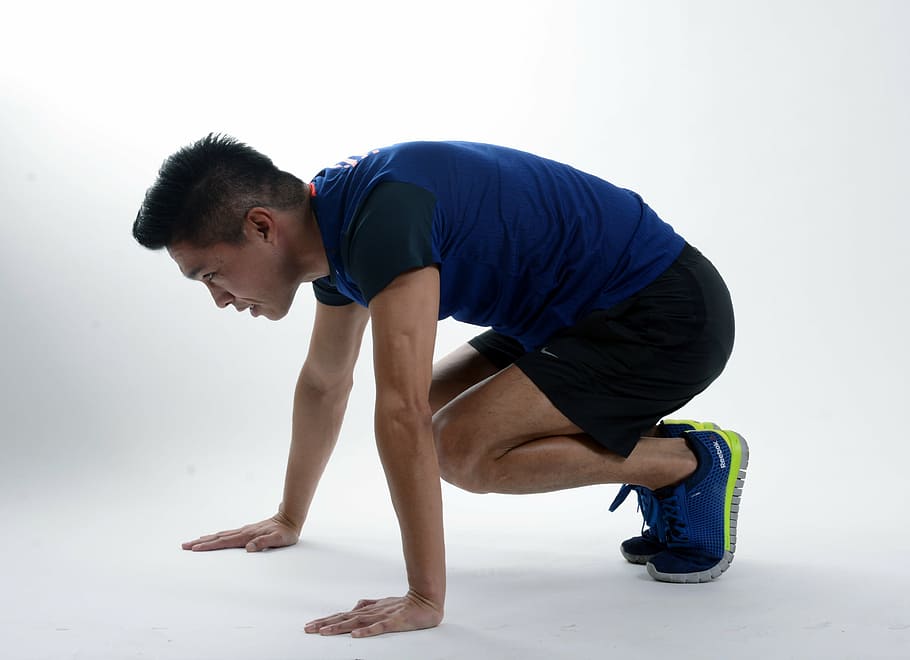
Proper form contributes to building symmetry and balance throughout your body.
– Medium
Proper technique not only makes your workouts safer, but also more effective. Here are a few pointers for the sample exercises:
- Push-Ups: The effectiveness of push-ups heavily relies on maintaining a plank-like position throughout the movement. Your body should form a straight line from the heels to the head, with no sagging in the lower back or piking up at the hips. Engage your core and glutes to stabilize your body, and focus on lowering down until your chest nearly grazes the floor. Pushing through your palms, extend your arms to raise your body back to the starting position. This full range of motion guarantees you are working the chest, shoulders, and triceps effectively.
- Burpees: A dynamic and explosive movement, the burpee is a full-body exercise that demands careful attention to form to prevent injury. When transitioning from a squat to a plank, ensure your hands are planted firmly on the ground shoulder-width apart. Jump your feet back smoothly, landing softly in a strong plank position with a braced core. This stabilization is key to protecting your back during the push-up phase. In the jump, power through your legs, keeping the landing soft to protect your joints. Each phase of the burpee should be performed with precision to maximize benefits and safety.
- Tricep Dips: When performing tricep dips, your positioning can greatly impact the effectiveness of the exercise and the strain placed on your shoulders. Sit on the edge of a stable bench or chair with your hands placed next to your hips. Slide off the edge, extending your legs and supporting your weight on your palms. Lower your body by bending your elbows to a 90-degree angle, keeping them pointed straight back, not flared out. Ensure your back remains close to the bench to optimize the focus on the triceps and reduce unnecessary shoulder strain. Pressing down through your palms, raise your body back to the start to complete the rep.
- Mountain Climbers: This high-intensity cardio movement is as much about core engagement as it is about speed. Starting in a high plank, your hands should be stacked directly under your shoulders as if performing a push-up. Drive one knee up towards the chest while keeping the rest of your body in a stable plank position. Quick switches between legs should not compromise the integrity of your plank; a common mistake is letting the hips rise too high or the lower back to sag. Focus on engaging your core to maintain stability, allowing the legs to move quickly and efficiently in and out.
By honing your attention to these form and technique nuances, you elevate the quality of your workout, ensuring each exercise delivers its maximum potential benefit while safeguarding against common injuries. Remember, in fitness, how you perform an exercise is just as critical as the exercise itself.
HIIT Workouts with Weights
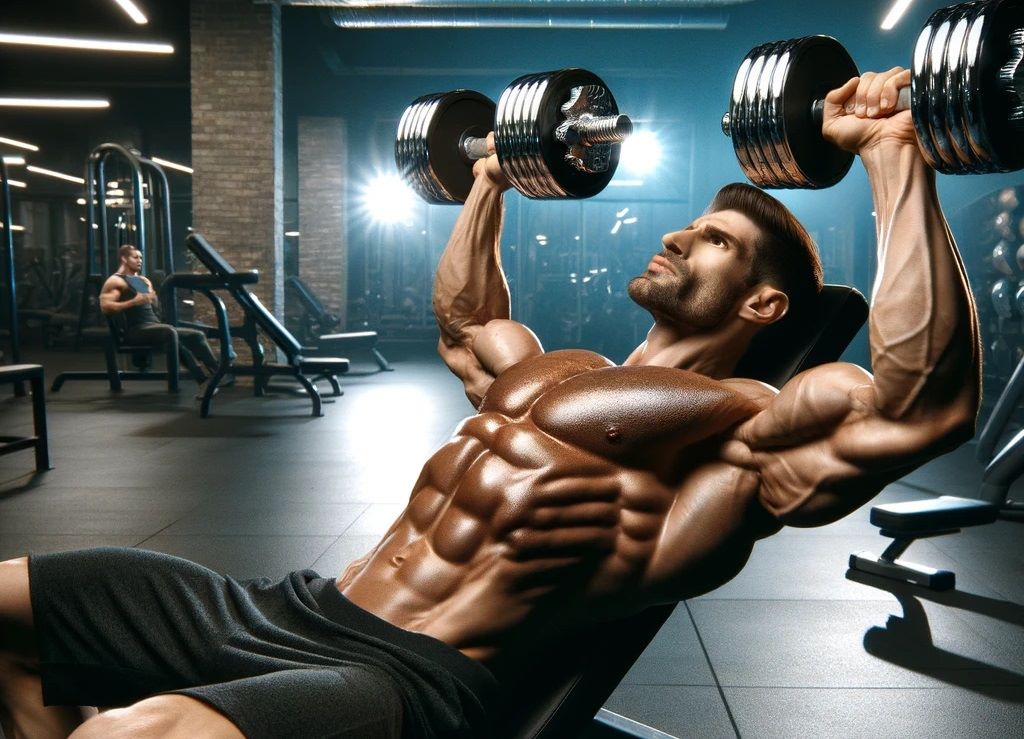
Incorporating weights into your Upper Body HIIT can add a new layer of challenge and opportunity for muscle growth. Weights could be in the form of dumbbells, cables, kettlebells, or even resistance bands. The added resistance forces your muscles to work harder, which can lead to increased strength and size over time.
Here’s a modified sample Upper Body HIIT Circuit with weights:
- Dumbbell Press: Position yourself on a bench or on the floor with a dumbbell in each hand. Press the weights above your chest, fully extending your arms before slowly lowering them back down. Perform this for 30 seconds, pushing as many repetitions as possible, followed by a 30-second rest.
- Bent-over Rows: Holding a dumbbell in each hand, hinge at the waist until your torso is almost parallel to the floor. Keep your back straight as you row the weights towards your chest, squeezing your shoulder blades together. After 30 seconds of work, take a 30-second pause.
- Bicep Curls: Stand with feet shoulder-width apart, holding dumbbells at your sides. Curl the weights while keeping your elbows close to your torso, then slowly lower them back down. Continue for 30 seconds, followed by a 30-second rest.
- Lateral Raises: With a dumbbell in each hand, raise your arms straight out to your sides until they are at shoulder level, then carefully lower them back down. This exercise should also be done for 30 seconds, followed by 30 seconds of rest.
- Rest: Conclude the circuit with a full minute of rest to allow your muscles to recover before starting the next round.
By weaving these weighted exercises into your HIIT routine, you amplify the workout’s complexity and effectiveness. The weights not only bolster muscular strength but also endurance, creating a well-rounded fitness approach that caters to those looking to elevate their upper body strength and overall physical conditioning.
Remember, the weights should be challenging but manageable. Proper technique is crucial with added resistance, so never sacrifice form for heavier weight.
Targeted Upper Body Exercises
Each workout in your Upper Body HIIT should feature exercises that hit different areas of your upper body. Here are some exercises that do just that:
Arms
Focusing on your arms involves a combination of movements that target both the biceps and triceps, ensuring balanced muscle development and strength.
- Skull Crushers: Lie on a bench or the ground with a dumbbell in each hand, extending your arms straight above you. Keeping your upper arms stationary, bend at the elbows to slowly lower the weights towards your forehead. Then, extend your arms back to the starting position. This exercise isolates the triceps, contributing to stronger, well-defined arms.
- Hammer Curls: Stand with your feet shoulder-width apart, holding a dumbbell in each hand with a neutral grip (palms facing each other). Curl the weights towards your shoulders while keeping your elbows pinned at your sides. Then, slowly lower the weights back down. Hammer curls specifically target the biceps and brachialis, aiding in arm thickness and strength.
- Concentration Curls: Sit on a bench, spreading your legs. Rest one arm against the same-side leg, palm facing forward with a dumbbell in hand. Curl the weight towards your chest, focusing on moving only your forearm. The concentration curl emphasizes the peak of the bicep muscle, enhancing the arm’s shape and definition.
By integrating these exercises into your routine, you can develop strength and muscle mass in your arms, contributing to overall upper body aesthetics and functional fitness.
Shoulders
- Lateral Raises: Stand with feet shoulder-width apart, a dumbbell in each hand at your sides. Without bending your arms, lift the dumbbells to the side until they reach shoulder height, then lower them back down. This exercise targets the deltoids, particularly the middle section, essential for achieving that sought-after shoulder width and definition.
- Front Raises: Similar starting position as the lateral raises, but this time, lift the dumbbells in front of you up to shoulder height. Lower them back down with control. Front raises primarily work the anterior deltoids, contributing to the overall development of the shoulder muscles and improving the strength required for various pushing movements.
- Shoulder Press: Seated or standing, hold a dumbbell in each hand at shoulder level, palms facing forward. Press the weights above your head until your arms are fully extended, then lower them back to the starting position. The shoulder press comprehensively works the entire shoulder complex and upper trapezius, essential for upper body strength and aesthetics.
- Upright Rows: With feet shoulder-width apart, hold a barbell or dumbbells in front of you, hands slightly narrower than shoulder-width. Pull the weights straight up to your chest, leading with your elbows, and then lower them back down. This exercise targets the shoulders and traps, contributing to overall upper body bulk and functional pulling strength.
Each of these shoulder-focused exercises plays a critical role in developing an aesthetically pleasing and powerful upper body. Balancing these movements within your upper body HIIT routine can help promote symmetric muscle growth, enhance shoulder stability, and improve your ability to perform daily activities and sports-related tasks with ease.
Chest
- Push-Ups: Begin in a plank position with your hands slightly wider than shoulder-width apart and your body forming a straight line from head to heels. Lower your body until your chest nearly touches the floor, then push up back to the starting position. Push-ups target the pectoral muscles, triceps, and anterior deltoids, offering a foundational exercise for upper body strength.
- Chest Press: Lie on a bench with a dumbbell in each hand, arms extended over your chest. Slowly lower the weights to the sides of your chest, then press them back up to the starting position. This exercise primarily works the pectoralis major, triceps, and shoulders, vital for building chest mass and strength.
- Chest Flyes: Lie on a bench with a slight bend in your elbows and a dumbbell in each hand, palms facing each other. Extend your arms wide to the sides, keeping the slight bend in your elbows, then bring the weights back together above your chest. Chest flyes target the pectoralis major, specifically emphasizing the muscle’s stretching and contracting movements, which aid in developing chest width and definition.
- Incline Push-Ups: Assume a push-up position with your feet elevated on a bench or step. This variation increases the angle of the exercise, placing more emphasis on the upper chest and shoulders. It’s an effective way to target the clavicular head of the pectoralis major, contributing to a more rounded chest appearance.
Each of these chest exercises offers unique benefits, targeting different aspects of chest development. By incorporating a variety of movements into your routine, you can achieve a comprehensive approach to building both strength and aesthetics in the chest area.
Back
- Bent-over Rows: With your feet shoulder-width apart, bend at the hips and keep your back straight. Hold a barbell or dumbbells in front of you, palms facing your body. Pull the weights towards your lower ribcage, then slowly lower them back down. This exercise targets the muscles of the upper back, including the latissimus dorsi, rhomboids, and traps, enhancing back strength and thickness.
- Superman: Lie face down on the floor, arms extended in front of you, and legs straight. Simultaneously lift your arms, chest, and legs off the ground, holding for a few seconds before slowly lowering back down. The Superman exercise primarily targets the lower back, specifically the erector spinae, aiding in improving posture and reducing lower back pain.
- Lat Pulldowns: Sit at a lat pulldown machine, grabbing the bar with a wider than shoulder-width grip. Pull the bar down towards your chest, then slowly release it back up. This exercise focuses on the latissimus dorsi but also works the biceps, middle back, and shoulders, crucial for achieving a wide, V-shaped back.
- Pull-Ups: Grip a pull-up bar with your hands slightly wider than shoulder-width apart, palms facing away from you. Pull yourself up until your chin is above the bar, then lower yourself back down. Pull-ups comprehensively work the upper body, particularly the back muscles and biceps, enhancing upper body strength and muscular development.
Each of these back exercises plays a vital role in creating a balanced upper body workout, focusing on strength, stability, and muscular endurance. Incorporating these movements into your routine can lead to improved posture, a stronger core, and a more defined back.
Finally, vary your exercises to ensure all muscle groups are attended to, and remember, the core should be engaged in all upper body exercises.
Maximizing Calorie Burn with HIIT
High-Intensity Interval Training (HIIT) is renowned for its efficiency in burning calories not just during, but also long after a workout session has concluded. This effectiveness can be attributed to the concept of Excess Post-exercise Oxygen Consumption (EPOC), often referred to as the “afterburn” effect. EPOC represents the increased rate of oxygen intake following strenuous activity, which occurs as the body works to restore itself to a pre-exercise state. This process requires energy, meaning that the body continues to burn calories at an elevated rate even during the recovery phase.
HIIT workouts, characterized by short bursts of intense exercise followed by brief rest periods, significantly elevate the heart rate and metabolic demand. This intensity causes the body to consume more oxygen during the recovery period, thus increasing the EPOC effect. Consequently, HIIT can lead to a higher total calorie burn in a shorter amount of time compared to steady-state cardio exercises. Additionally, the elevated calorie burn from the afterburn effect can persist for hours, and in some cases, up to a day following the workout, making HIIT a powerful tool for those looking to increase their metabolic efficiency and accelerate fat loss.
Combining Cardiovascular and Strength Training
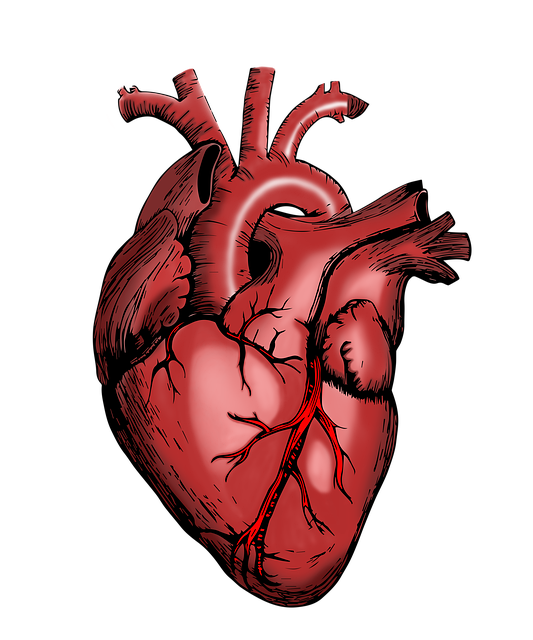
The main advantage to HIIT is that you can boost your cardiovascular fitness faster by working harder instead of longer.
Combining cardiovascular and strength training is a method that brings the best of both worlds, optimizing fitness, endurance, and muscle growth. This holistic approach not only enhances your overall physical condition but also improves metabolic health, reducing the risk of chronic diseases such as heart disease, diabetes, and obesity.
Benefits of Combining Cardio and Strength Training
- Increased Fat Loss: Cardio helps burn calories and fat, while strength training builds muscle, which in turn increases resting metabolic rate, leading to more calories burned even when not exercising.
- Improved Cardiovascular Health: This combination enhances heart health by not only strengthening the heart muscle but also improving its efficiency in pumping blood to muscles being exercised.
- Enhanced Endurance: Strength training improves muscular endurance, allowing for more effective and longer cardiovascular training sessions.
- Balanced Physical Fitness: Incorporating both training types ensures a balanced fitness regimen, preventing overuse injuries and promoting overall body strength and fitness.
How to Combine Cardiovascular and Strength Training
- Alternate Days: Dedicate specific days to cardiovascular training and others to strength training to allow for adequate recovery in between.
- Integrated Workouts: Include short bursts of cardio exercises (like jumping rope or sprints) within a strength training session or add weight resistance exercises in the middle of a cardio workout.
- High-intensity Interval Training (HIIT): HIIT combines the principles of both cardio and strength training, offering a high-calorie burn in a short period, making it an efficient way to achieve fitness goals.
Incorporating both cardiovascular and strength training into a workout regimen can lead to significant improvements in health, fitness, and physical appearance. It provides a comprehensive approach to fitness that addresses various aspects of physical health, making it an effective strategy for achieving and maintaining optimal fitness levels.
Recovery and Stretching
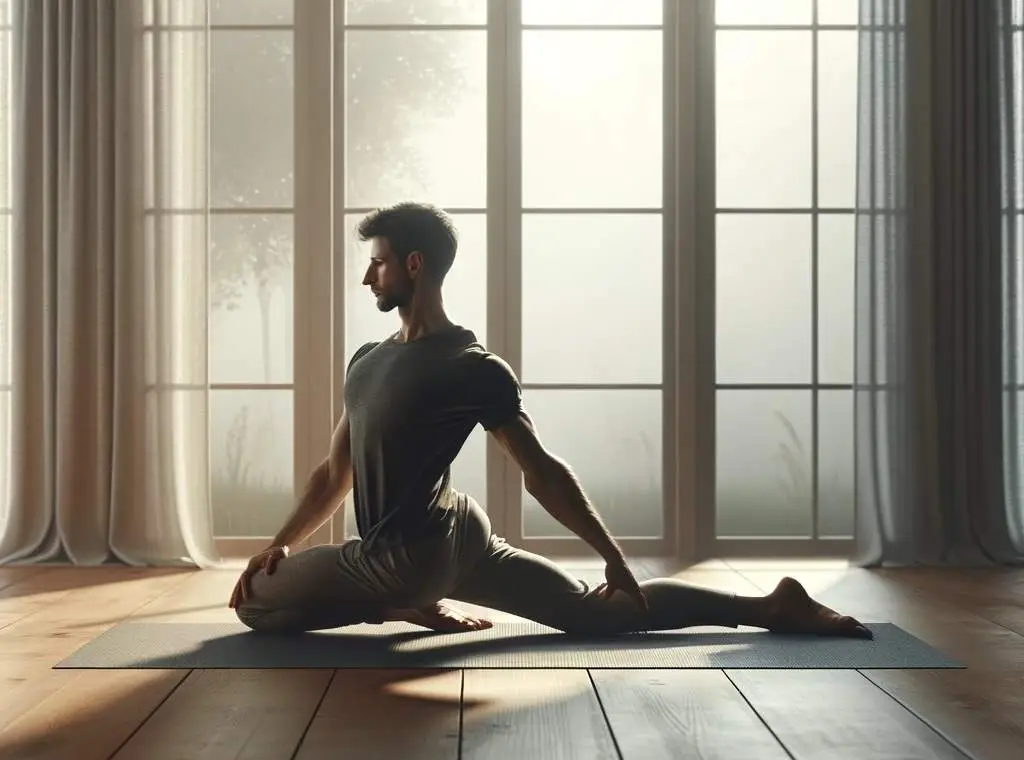
Proper recovery and stretching play a crucial role in any fitness regimen, aiding in muscle repair, flexibility, and overall performance. The incorporation of recovery techniques and stretching exercises can significantly reduce the risk of injury, alleviate muscle soreness, and enhance athletic performance by improving range of motion. Here are essential aspects of an effective recovery and stretching routine:
Importance of Recovery
- Muscle Repair and Growth: Recovery time allows muscles to repair and grow stronger. Without adequate rest, the muscles cannot fully recover, leading to decreased performance and increased risk of injury.
- Prevents Overtraining: Allowing the body to rest prevents overtraining syndrome, characterized by fatigue, decreased performance, and a weakened immune system.
Stretching Benefits
- Increases Flexibility: Regular stretching can improve flexibility, which is vital for overall health. Enhanced flexibility helps in performing daily activities with ease and leads to better posture and reduced muscle discomfort.
- Promotes Circulation: Stretching increases blood flow to the muscles, which can speed up recovery after a workout and reduce muscle soreness.
Recovery Techniques
- Active Recovery: Low-intensity activities like walking or light cycling on rest days help in muscle recovery by improving circulation.
- Sleep: Quality sleep is one of the most effective recovery strategies, facilitating muscle repair and growth hormone release.
- Nutrition and Hydration: Eating a balanced diet rich in nutrients and staying hydrated are essential for muscle recovery and overall health.
Stretching Exercises
- Dynamic Stretching: This involves moving parts of your body and gradually increasing reach, speed of movement, or both. It is ideal before a workout to prepare your muscles.
- Static Stretching: Stretching a muscle to the point of mild discomfort and holding that position for at least 20-30 seconds. Best performed after workouts to help with flexibility.
Incorporating dedicated recovery days and stretching routines into your fitness program is paramount for long-term health and performance. It’s important to listen to your body and allow it the time it needs to rest and recover, ensuring you can continue to train effectively and safely achieve your fitness goals.
Frequently Asked Questions (FAQs)
It largely depends on your current fitness level and goals. Starting with 2-3 sessions a week is a good beginning point, while experienced individuals might opt for 4-5. The key is to allow for sufficient recovery, as HIIT is intense and can lead to overtraining if not managed properly.
The beauty of HIIT is its efficiency. An effective Upper Body HIIT session can be completed in as little as 20-30 minutes, including warm-up and cooldown. Of course, this can be adjusted based on fitness level and available time.
While you might have the energy and motivation to crush a HIIT session every day, it’s not recommended. Rest and recovery are just as crucial as the workout itself for muscle development and injury prevention. Space out your sessions to allow for at least one day of rest between upper body workouts.
Conclusion
Your upper body is a powerhouse of muscle groups capable of incredible feats. HIIT harnesses their potential, delivering a workout regimen tailor-made for strength, stamina, and aesthetics. By integrating the principles and sample circuits provided in this guide, you’re not just turning the page on your fitness narrative; you’re writing a whole new chapter—one of vigor and accomplishment.
It’s time to grab the metaphorical pen, or in this case, the dumbbells, and take charge of your fitness destiny. Start your Upper Body HIIT Workout today and witness the transformation tomorrow. Your body is the canvas, and with this guide, you’re the artist of your strong, sculpted future. Happy lifting!


